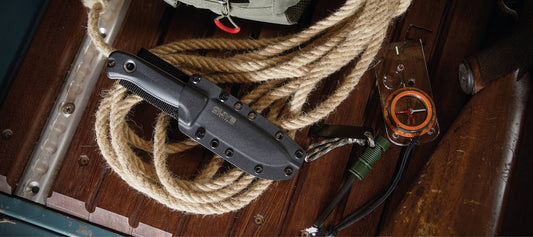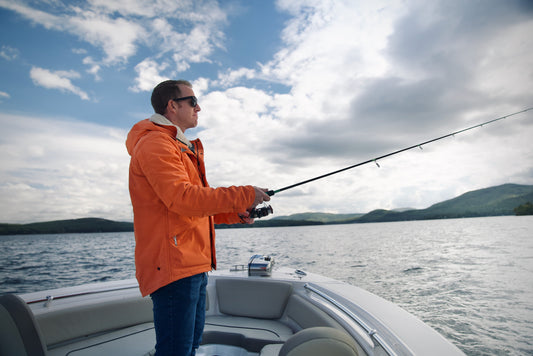Welcome to the Olive Knives blog! In this first post, we delve into the fundamental skill of making fire using your Arbor knife. Mastering this technique is invaluable, whether you're in the wilderness or honing your survival skills. Let's explore the steps to create fire with your trusty Olive fixed-blade knife, the Arbor.
Safety precautions:
- Clear the area: Remove flammable materials around your fire pit.
- Keep water nearby: Have a water source ready for emergencies.
- Practice safely: Practice fire-making in controlled environments before attempting it in the wild.
What you need:
- Your trusted Arbor knife.
- A Ferro rod.
- A bit of patience and a determined spirit.
Steps to make fire with your Arbor knife (using a feather stick or tinder and K kindling)
1. Choosing the right knife
The Arbor knife: A reliable companion for fire-making due to its sturdy construction and sharp spine.
Maintenance: Ensure your knife is well-maintained and sharp before starting.
2. Creating a feather-stick or gathering tinder and kindling
2.1 Feather stick:
Gather dry, straight branches free from moisture. Thicker branches should be split into thinner pieces to form what looks like a plank. Using the Arbor knife, make a flat spot on your branch for better contact with the ferro rod.
Keep the knife stationary and pull the branch back and forth.
Start at a knife angle where the knife is not cutting into the wood and adjust the knife angle until thick slithers of wood are created. Don't cut the slithers off completely; they need to gather into a "nest" of "curled" slithers.
Change the branch (plank) angle slightly with every cut to keep the slithers the same width.
2.2 Tinder: Look for dry tinder, such as small twigs, dry leaves, or birch bark.
2.3 Kindling: Collect slightly larger sticks that will catch fire from the tinder.
3. Creating a Spark (that lasts)
Tools:
Use the back of your Arbor knife and a flint or ferro rod.
Technique:
Keep your knife at about an 80-degree angle with the ferro rod. (When using the correct method, standing upright with your feet shoulder-width apart, sparks should still be burning when hitting the ground. Most people don't use enough pressure and move the knife too quickly.)
Keep the knife stationary and pull back the ferro rod. You can also stick the knife point into the feather stick and then pull the ferro rod over the knife's spine. Ensure deliberate, controlled, slower, high-pressure movements to avoid tiny, insufficient sparks and potential injury. (Hint: frustration is the enemy of the spark).
Experiment with the pressure applied to produce consistent sparks. The knife should create a thin slither (curled up) from the ferro rod. Once this is achieved, simply increase your speed until it creates a spark.
4. Building the fire
Once your feather stick/kindling takes fire, put small twigs on the fire. As these small twigs start burning, thicker pieces of wood are added.
Congratulations! You've learned to make fire using your Arbor knife, a ferro rod, and feather sticks. This essential survival skill can be invaluable in various outdoor scenarios. Remember to continue practising and honing your fire-making abilities. Stay tuned for more tips, tricks, and insights on wilderness survival and the versatile uses of Olive Knives.
Happy adventuring!



